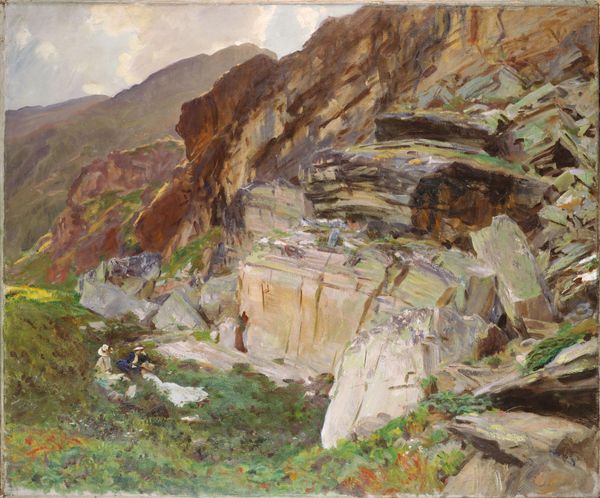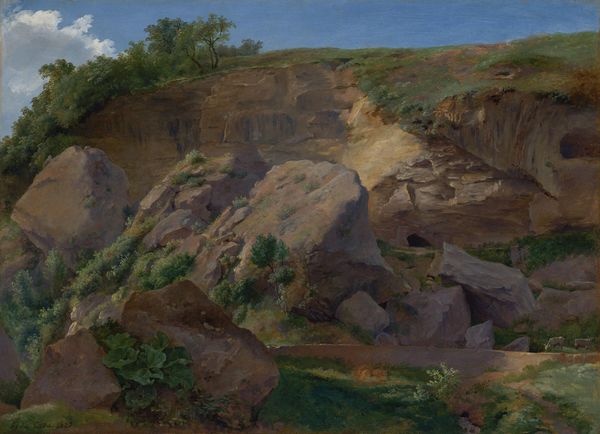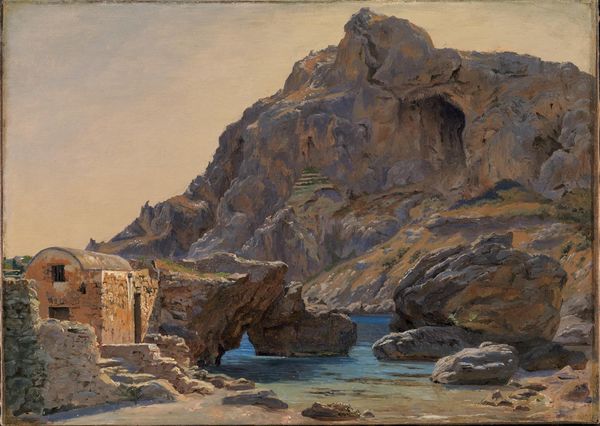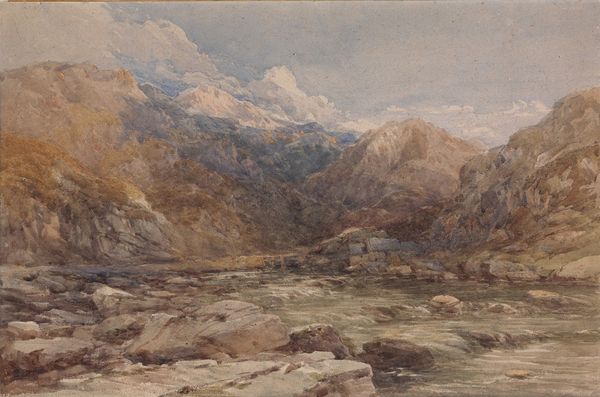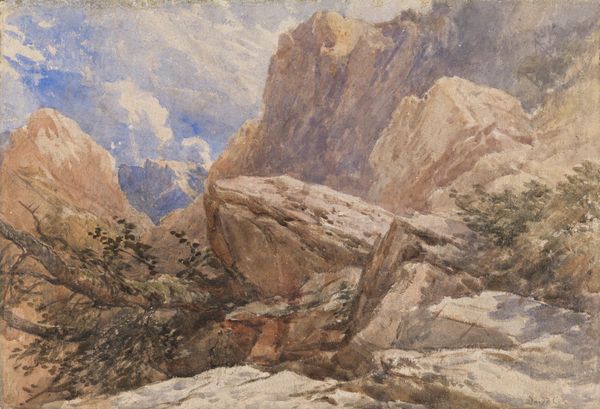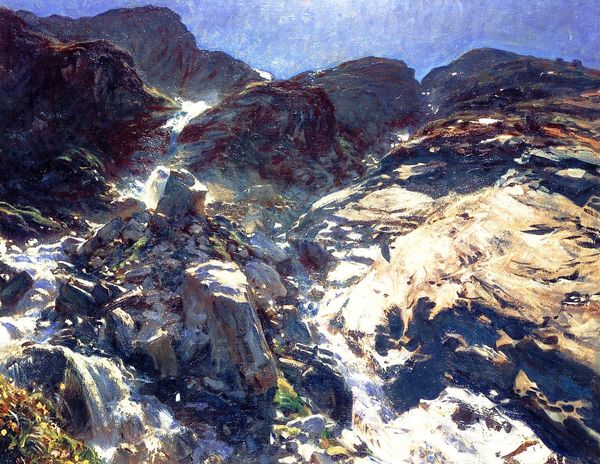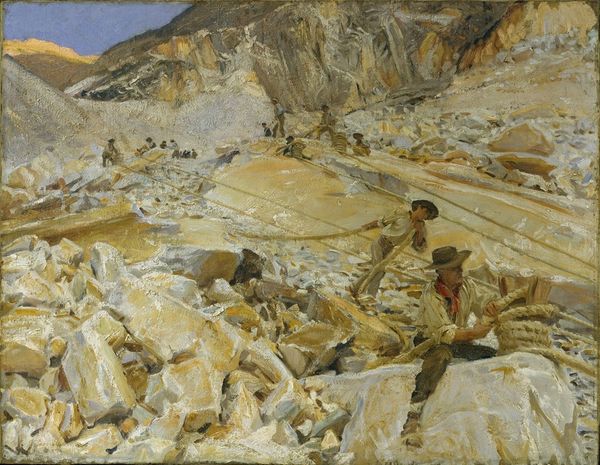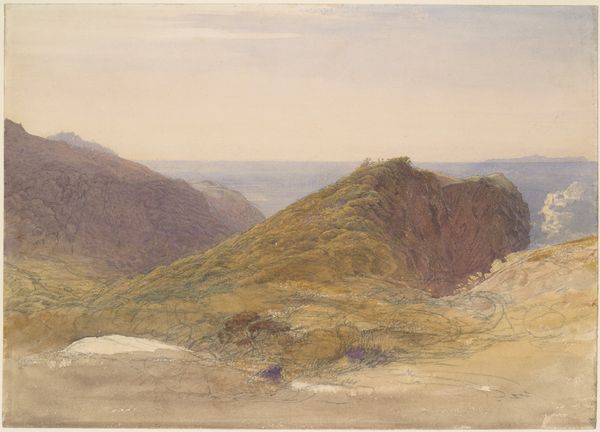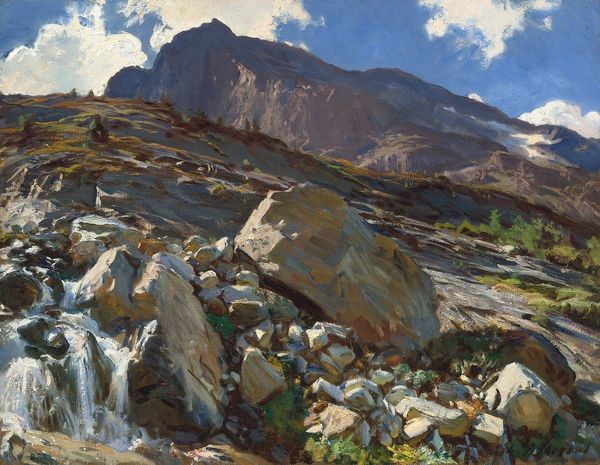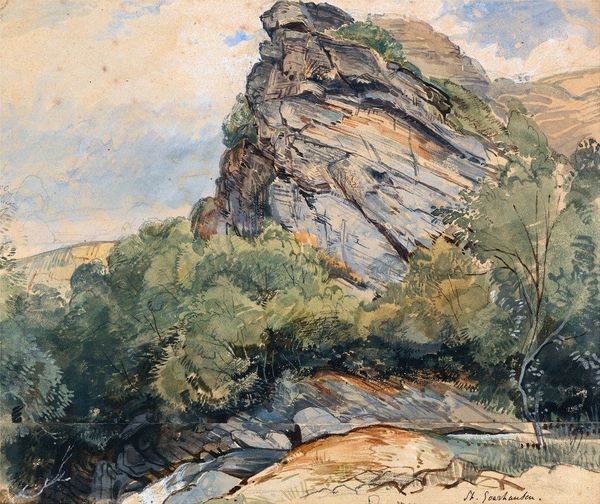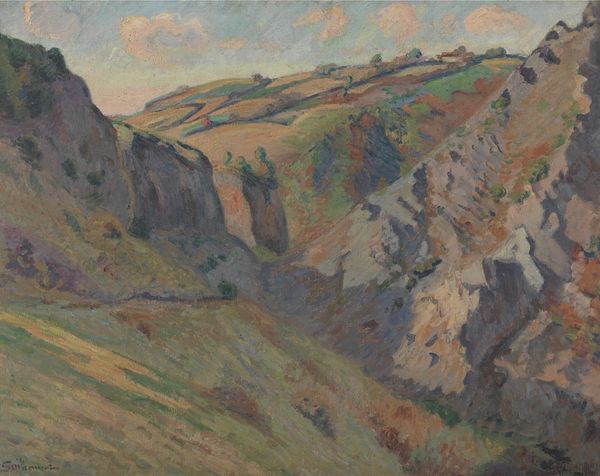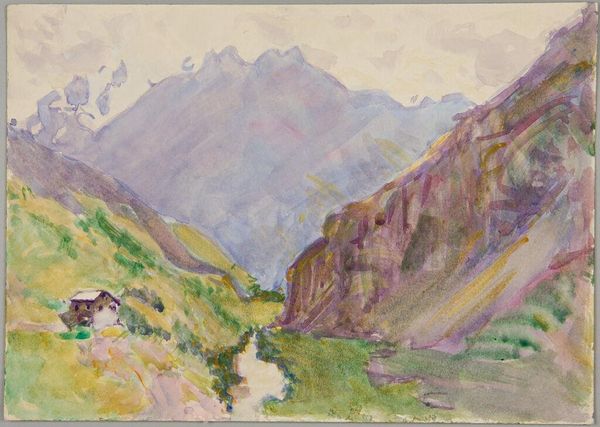
Copyright: Public Domain: Artvee
Editor: We're looking at John Singer Sargent's "In the Simplon Valley," painted around 1909 to 1911. It's an oil painting, and the landscape feels really dynamic. What strikes you most about how it's composed? Curator: Note how Sargent positions the figures, almost camouflaged against the monumental rock face. The composition is striking; a dialogue between human presence and geological mass. Observe how the fragmented brushstrokes build the illusion of depth. What effect do you think this has? Editor: It almost overwhelms the figures; they seem so small against the rock, even though they are in the foreground. So, is it more about the overall composition, color palette, and application, or the figures? Curator: The painting hinges on the tension between detail and abstraction. Notice the artist's sophisticated understanding of light and shadow to render the textures of the rocks. The human presence punctuates the scene but ultimately yields to the visual weight of the landscape. Consider the implications of a human reduced to mere elements within nature’s grand design. Editor: I see what you mean. It’s about how the eye moves across the canvas, the rhythm of light and dark. It’s less a story, more of an arrangement. So, should we see it as nature's powerful statement, or as brushstrokes working with the scene? Curator: It presents both the optical sensations of plein-air painting, and an inherent engagement of romantic sublime's vastness. Let’s appreciate that duality, for in this duality lies its success. Editor: Okay, I understand now. I see it now not just as a pretty scene, but as the artist's way of working with visual elements and their interaction on the canvas. Curator: Indeed. That careful deliberation is how Sargent orchestrates not just an image, but a visual experience, prompting viewers to reflect on their relation to the natural world.
Comments
No comments
Be the first to comment and join the conversation on the ultimate creative platform.
